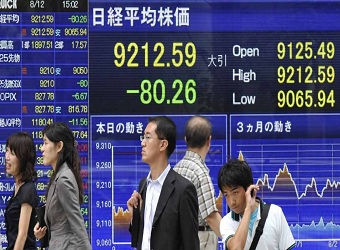Asian stock markets were mixed on the last trading day of the year, tracking a weak lead from Wall Street, with Hong Kong and Taiwan in the lead.
For the year, China’s Shenzhen composite was Asia’s worst-performing index, down nearly 15 percent, while Pakistan’s Karachi All-Share Index was the biggest winner with gains of 45 percent.
Japan’s Nikkei 225 finished 0.16 percent, extending losses after Thursday’s decline, but still managed to close above 19,033 points, its first five-year run of rises since 1990, said Shoko Tani, research analyst at Nomura, in a note. For the year, the Nikkei eked out a modest 0.4 percent gain.
Takata rocketed up 21.22 percent after Reuters reported that the airbag maker could settle criminal charges with the U.S. Department of Justice before the Obama administration leaves office in January.
Toshiba shares jumped 9.43 percent on announcements of a goodwill charge of”several billion dollars” for its U.S. subsidiaryWestinghouse. Fears of a multi-billion dollar write-down saw the stock tumble earlier in the week, leaving it 36 percent lower week-to-date.
Australia’s ASX 200 closed down 0.58 percent, weighed down by financials; Macquarie and AMP lost 1 percent each. But gold stocks outperformed, tracking gains in the yellow metal, with Evolution Mining nearly 10 percent higher and Newcrest Mining up 5.14 percent.
The ASX ended the year with a 7 percent gain, while New Zealand’s benchmark index closed out 2016 with a near 9 percent gain.
Hong Kong’s Hang Seng index jumped 1.1 percent, up for the third straight session, with financials AIA and ICBC both nearly 2 percent higher. The index was on track to finish 2016 with a 0.4 percent rise.
Taiwanese shares rallied 1.1 percent thanks to near 1 percent increases in heavyweights TSMC and UMC; the benchmark index ended the year up 11 percent .
The Shanghai composite finished up 0.24 percent at 3,103 points, notching a 12 percent loss for the year. The yuan was Asia’s worst-performing currency in 2016, with a 6.6 percent loss against the greenback.
Beijing is set to change the way it calculates the daily yuan midpoint in the new year by doubling the number of foreign currencies in a basket used to set the yuan value, China’s foreign exchange market operator said late on Thursday. “This shows that the government is trying to adopt a more flexible approach to stabilize the yuan against the backdrop of the strengthening U.S. dollar,” said Margaret Yang, market analyst at CMC Markets.
Markets in the Philippines and South Korea were shut on Friday.
Overnight, U.S. indices ended lower after the Dow repeatedly failed to hit the elusive 20,000 mark. Historically, the week between Christmas and New Year’s Day has led to a surge in the price of stocks, dubbed the Santa Claus rally.
Source: CNBC



